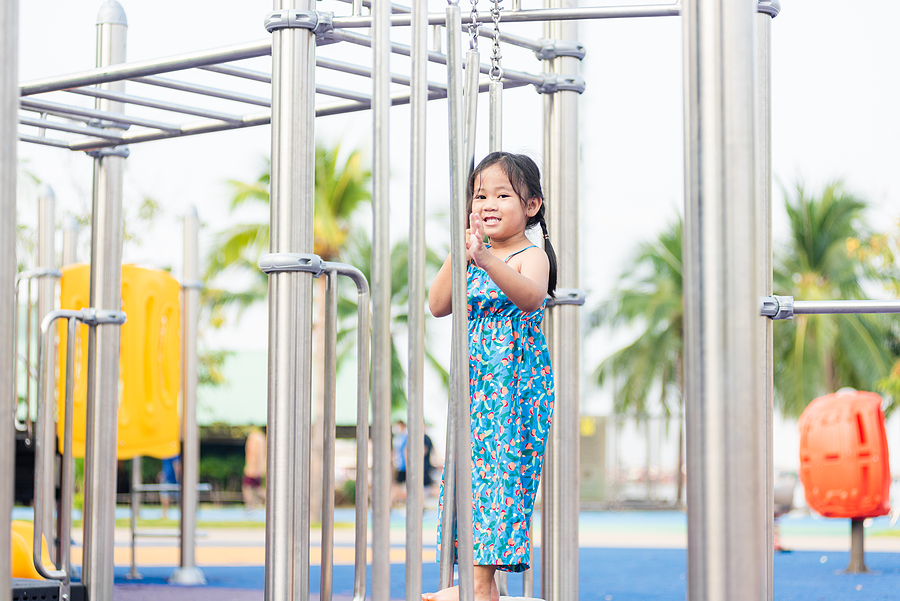By Amanda Grigg, MS, OTR & Emily Alvarez, MOT, OTR
When most people think of sensory play, they picture different textures and bins to explore with hands. While this is a great example of sensory play for the tactile system, there are many other sensory systems that need to be addressed. Sensory play can also look like:
- Climbing, jumping, swinging
- Obstacle courses: https://www.youtube.com/watch?v=fNgqXaVBDao
- Scavenger hunts
- Games like “I Spy” or “Simon Says”
- Finding or identifying different scents
An Introduction to Sensory Systems
The 5 most known sensory systems are the ones we learned about in elementary school: sight, touch, taste, smell, and hearing. However, we have 3 additional sensory systems, including the vestibular system, the proprioceptive system, and interoception.
With each sensory system, we demonstrate a combination of seeking and avoidant behaviors to be most comfortable and focused. Children have not yet learned how to filter out unnecessary sensations, so they need help finding that balance. For example, you may forget about the socks you are wearing after your brain realizes they are on for the day and aren’t going anywhere. However, a little one has not had enough experience to remember this sensation can be put into the background, so they may be irritable all day because they can feel their socks.
The Vestibular System
One of the lesser-known sensory systems is the vestibular system, which is detected through your inner ear and tells your body how you’re moving through space. According to The OT Butterfly, there are 5 different types of movement that the system can detect. These include moving in a straight line, being upside down, and rotation. Some children may be more or less sensitive to this movement. Therefore, adults can help by increasing or decreasing the amount of movement in play.
Signs your child prefers increased vestibular input
- Frequent spinning
- Risky behaviors like jumping from high surfaces
- Walking on toes
- Balancing on furniture and other people
- Adjust play and routines by:
- Adding trust falls (tipping backward)
- Spinning
- Lifting them up high
- Falling onto a safe surface, such as a DIY crash pad made with a fitted sheet filled with stuffed animals/pillows/blankets
- Play red light/green light to get to the next activity in the routine
- Flying on tummy to the next activity in the routine (i.e. “Let’s fly to the table for dinner!”)
Signs your child prefers more gentle vestibular input
- They get upset when laying back to change a diaper
- They demonstrate avoidance or extreme discomfort in the car
- Increased caution and nervousness about going up/down stairs or playscapes
- Adjust play and routines by:
- Laying down for diaper/clothing changes on tummy or side then rolling to back when already horizontal
- Slow/small movements when able
- Providing a toy or blanket to squeeze/cuddle when in the car
- Constructing very simple obstacles, such as a rolled up blanket to start slowly
The Proprioceptive System
Another overlooked system is the proprioceptive system, which is detected through muscles and joints. This system tells your body where you are in space and how much force to use when completing an activity. This is the system that lets you know when you pick something up too forcefully, thinking it is heavier than it is. Here is an example of a proprioceptive prank from The Office: https://www.youtube.com/watch?v=XDgpBu_RYIU.
Proprioception is different than the other sensory systems. Because this type of sensation is always calming and organizing, it helps to focus the mind and body. Heavy work is a common term used to explain activities that require muscles and joints to work together, creating a full body activity. There are a few examples below, but there are many more ideas linked here: https://yourkidstable.com/heavy-work-activities/.
- Pushing/pulling heavy objects, such as a full laundry basket or wagon
- Climbing up a slide
- Animal walks
- Pushing a friend on the swing
- Chores, such as raking leaves, vacuuming, or carrying out the garbage
The Interoception System
Finally, we have interoception, which is detected by internal organs. This is the system that lets us know if we are hungry or thirsty, if we need to use the restroom, if our heart is racing, or if we are short of breath. This is a more challenging sensory system to address, because we have little control over our organs.
- Signs your child has trouble with interoception
- Difficulty with potty training
- Frequent accidents
- Difficulty with sleep
- Eating too much or too little
- Feeling hungry, tired, or fussy more frequently than other children their age
- Ways we can help
- Routines!! Keeping consistency in the day can help a child identify and understand the sensations they are experiencing and how to meet their own needs.
- Toileting schedule
- Keeping the same time between potty breaks
- Maintaining a routine during potty breaks
- Eating at the same time each day
- Consistent sleep/nap schedules
We are constantly learning more about how we process sensory information from our environment and finding ways to maintain the most beneficial balance. Sensory processing impacts how we experience the world around us and shapes our preferences of activities and relationships. Reach out to your pediatrician for an occupational therapy referral if your child is demonstrating challenges in any of these areas that may impact their daily routine, play skills, or social engagement.
More information on Winnie Dunn’s Model of Sensory Processing: https://ottheory.com/therapy-model/dunns-model-sensory-processing
More information on vestibular input: https://theotbutterfly.com/vestibular-input/sensory-processing/
Heavy work ideas: https://yourkidstable.com/heavy-work-activities/
Sensory strategies by type of sensory input and goal (calming versus alerting): https://totalability.ca/wp-content/uploads/ebooks/Sensory-Behavior-Strategies.pdf















